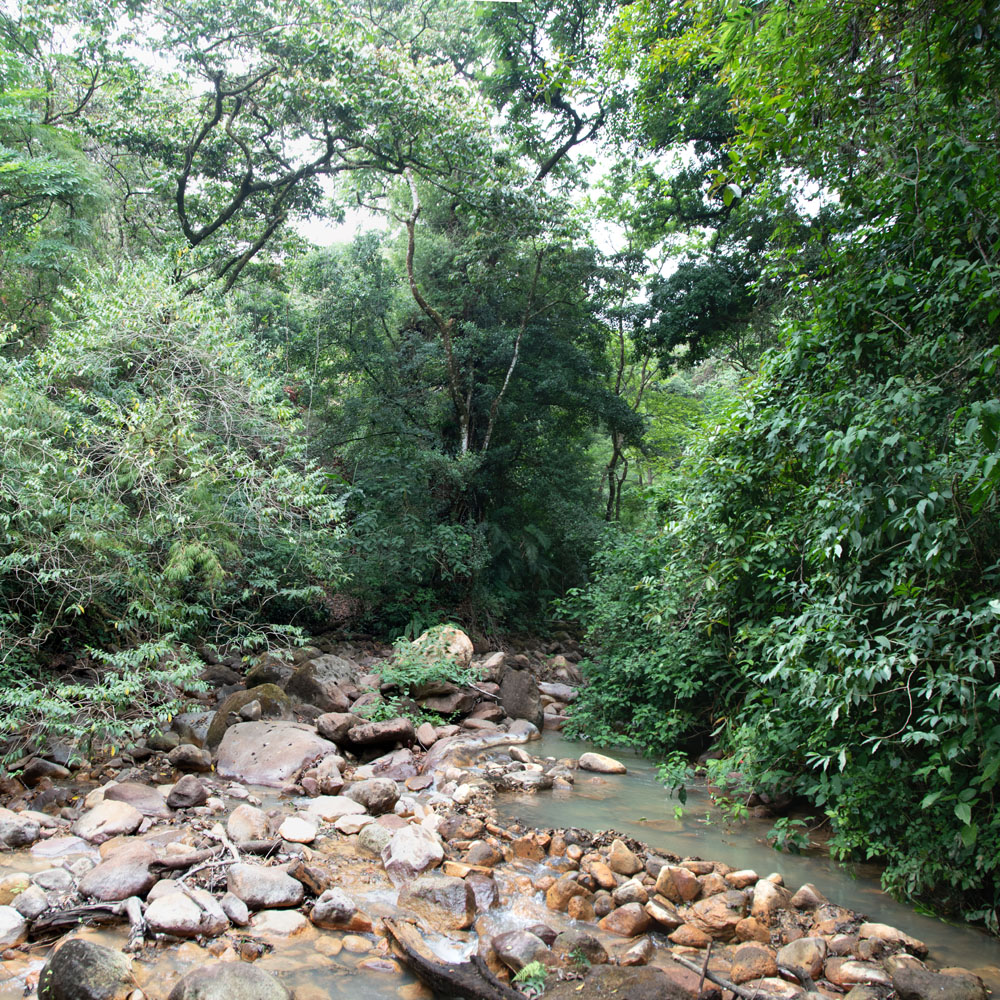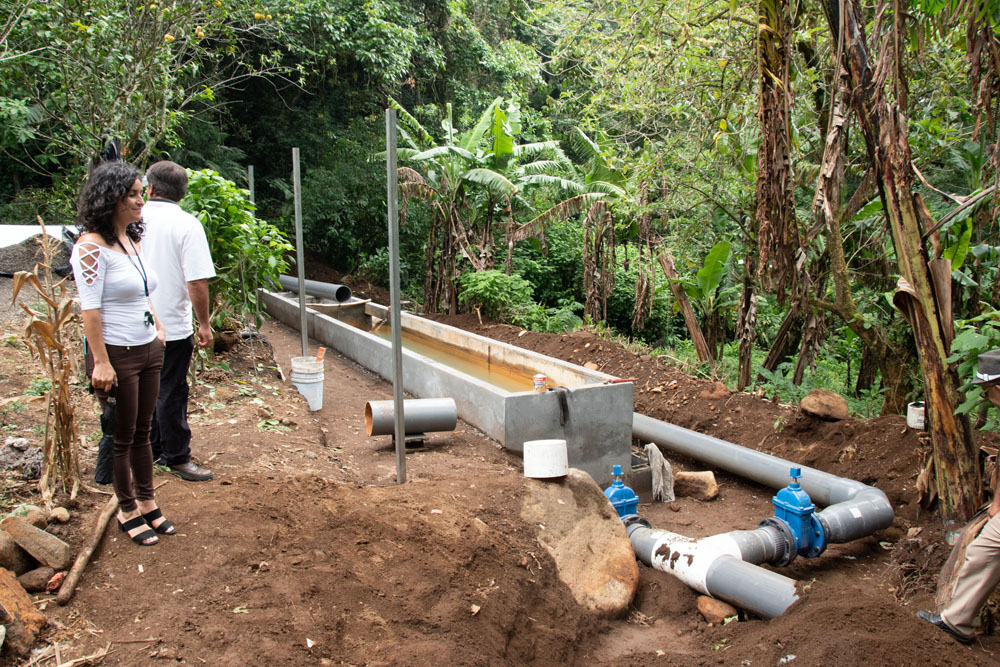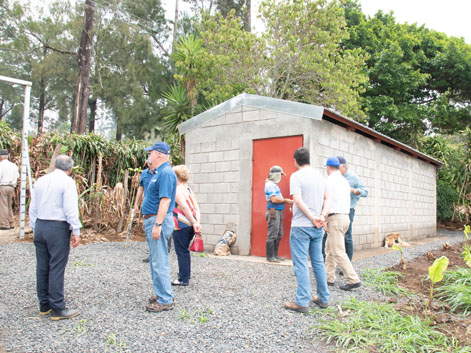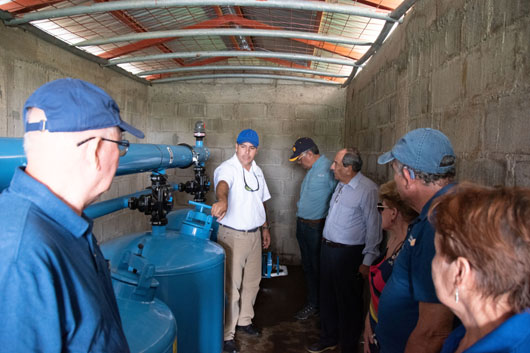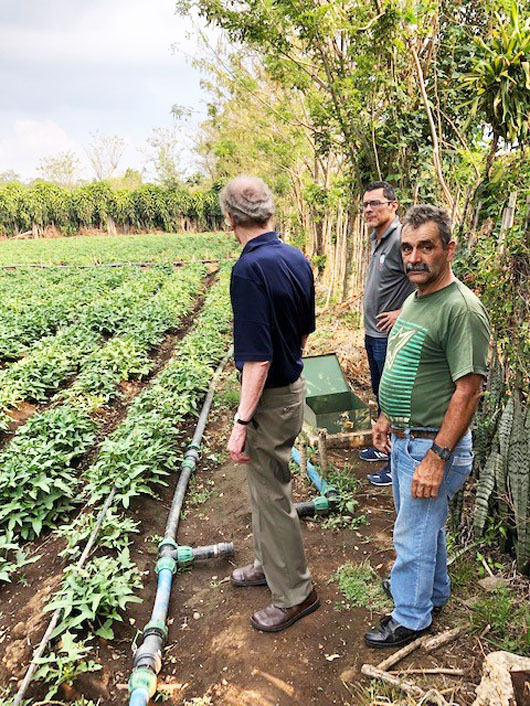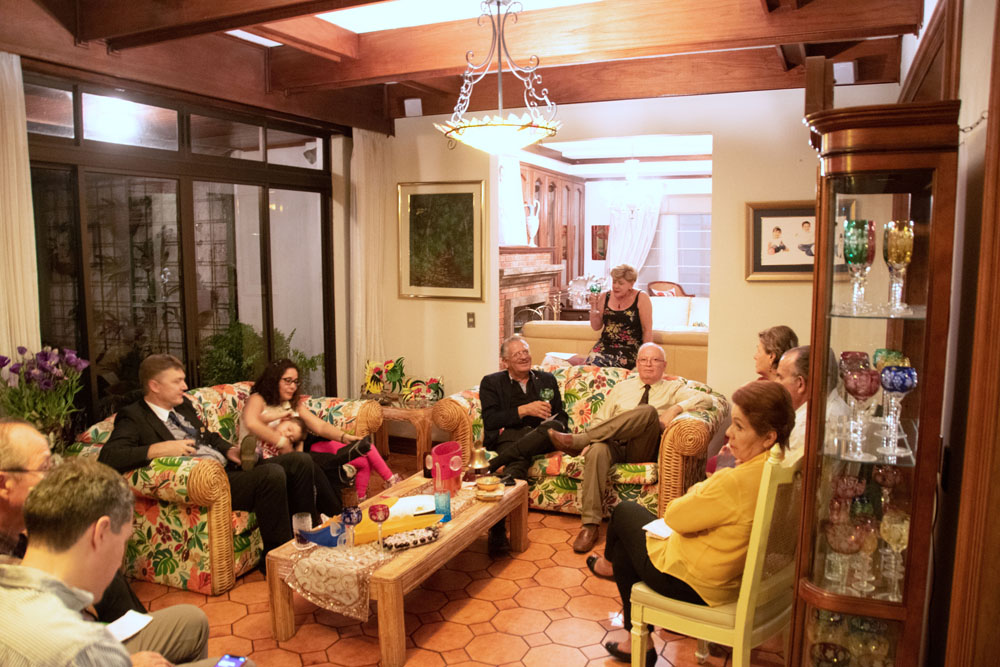 |
||||||||
|
|
VISIT TO SANTA BARBARA IRRIGATION PROJECT, APRIL 10TH THROUGH APRIL 13TH, 2019
The Virginia Peninsula Rotary Club visited with the Heredia Rotary Club in Costa Rica to review their joint project, a $43,275.00 economic development grant to benefit a cooperative organization of small farms that share an irrigation system. A badly leaking piping system was to be replaced, distribution equipment was to be renovated, the flood or spray irrigation techniques were to be replaced by the much more water-efficient drip irrigation, and filters would be introduced to make the water clean enough that it would work in the new system.
The review of the project, Rotary Foundation Global Grant GG1749733, began with a meeting in Santa Barbara. Shown here seated at the head of the table is William Salazar Soto, President of la Sociedad de Usuarios de Agua (SUA), or water users group, our "client" in the project. Joining in the meeting were the director of Centro Agricola Cantonal de Santa Barbara (CAC), a quasi-governmental agency supporting local agriculture; representatives from Agrologico, the contractor responsible for the work on the larger pieces of infrastructure; a representative from SENARA, the Costa Rican government organization overseeing agricultural irrigation; Ray Spencer from the Peninsula Rotary Club, and many members of the Heredia Rotary Club.
The centerpiece of the visit was a larger meeting that included a more diverse selection of government agencies, the Mayor of the town of Santa Barbara, and the Minister of Agriculture for Costa Rica. Shown in the photo on the right above is Ray Spencer, pausing as he speaks while Robert Gifford of the Heredia Club translates for the Spanish-speaking audience. When it was decided that the Peninsula Rotary Club would be visiting at this time, this meeting was organized to gather all the various stakeholders to discuss all the delays, misunderstandings, and conflicts that seemed to have threatened the success of the project. By the time the meeting actually took place, however, the people involved had worked out every one of the problems and there was nothing left to resolve--so the meeting turned into more of a celebration than a negotiating session. Ray Spencer told the assembly that as an outsider he had observed that patience and tolerance were key features of the Costa Rican national culture, and that they should congratulate themselves for their ability to listen to one another and work things out.
During this visit we saw the entire irrigation system. This photo shows where it all starts--at the Ciruelas River in the mountains above Santa Barbara. In the foreground to the left is where the river continues to flow in its normal path, but to the right of the foreground you can see that a channel has been formed that diverts some of the water into the irrigation system, eventually entering a 10-inch diameter pipe. This source of the water is several kilometers from the irrigated farms, and some 80 meters higher in elevation. The difference in elevation means that no pumps are needed in the system--all flow is by gravity. We were there at the very end of a dry season that was dryer than normal, and the river was nevertheless still flowing well. This water source has proved to be reliable like this for many years.
Quite near to the water source at the river is a sedimentation tank, where sand, silt, and other contaminants can settle out of the water. While not very photogenic, the tank is important in the cleaning of the water. Rehabilitating and partially rebuilding this concete structure, work valued at roughly $5,000, is part of what the Rotary grant is paying for.
Near the fields, well down the mountain from the water inlet and the sedimentation tank, is the filter house. For the new drip irrigation systems to work, the water needs to be clean enough that it does not plug the tiny holes that allow the drips from the pipes. This thorough cleaning is the job of these sand filters. The cost of the filters, almost $17,000, is one of the major items included in the Rotary Grant. The third item included in the grant is the 2 1/2 kilometers of new piping that connects the sedimentation tank to the filter house: this piping is costing over $21,000.
The overall project for the renovation of the irrigation system costs more than $100,000. The $43,000 Rotary Global Grant is the catalyst that makes the overall renovation possible, but the farmers themselves, as the SUA organization, were able to finance the rest through some government grants and some low-interest loans that will be paid off by the increased profits coming from the more efficient irrigation. The complexity of the financing was one of the reasons for some of the delays that plagued the early stages of the project.
The photo above shows some of the drip irrigation pipes that emit water slowly through tiny holes. The farmer said that these were sweet potato plants, but some of the Heredia Club members who were familiar with food in the United States had to explain that what Costa Ricans call sweet potatoes are entirely different plants from what we call sweet potatoes in the US. And no, they are not yams, either.
Getting water from the sand filters out to the fields is the final stage of the project. As the pipelines get extended, more farmers are hooked up to the new system.
One of the pleasures of a Rotary trip is making new friends and seeing old ones. The photo on the left shows us Rotarians enjoying a very good meal at a very local eatery near the mountain river that is the source of the irrigation water. In the photo on the right, the two in the center are Miriam and Mario Gil. Mario was President of the Escazu Rotary Club in 1999 when the Peninsula Club made its first visit to Costa Rica. The couple has been good friends of our club through all of the twenty years since.
On the final evening of the visit, there was an elegant dinner at the gracious home of Virginia Hernandez. It was not the Heredia Club's normal meeting time, nor was it their normal meeting place, but it was nevertheless an official meeting. If you look closely at the coffee table you can see the Rotary bell. Anyone who has not been on a Rotary trip to Costa Rica has missed out on meeting the warmest, friendliest people on the planet. For that matter, anyone who has not been on any Rotary trip to a different part of the world has missed a great opportunity. |
|||||||
|
|
||||||||



